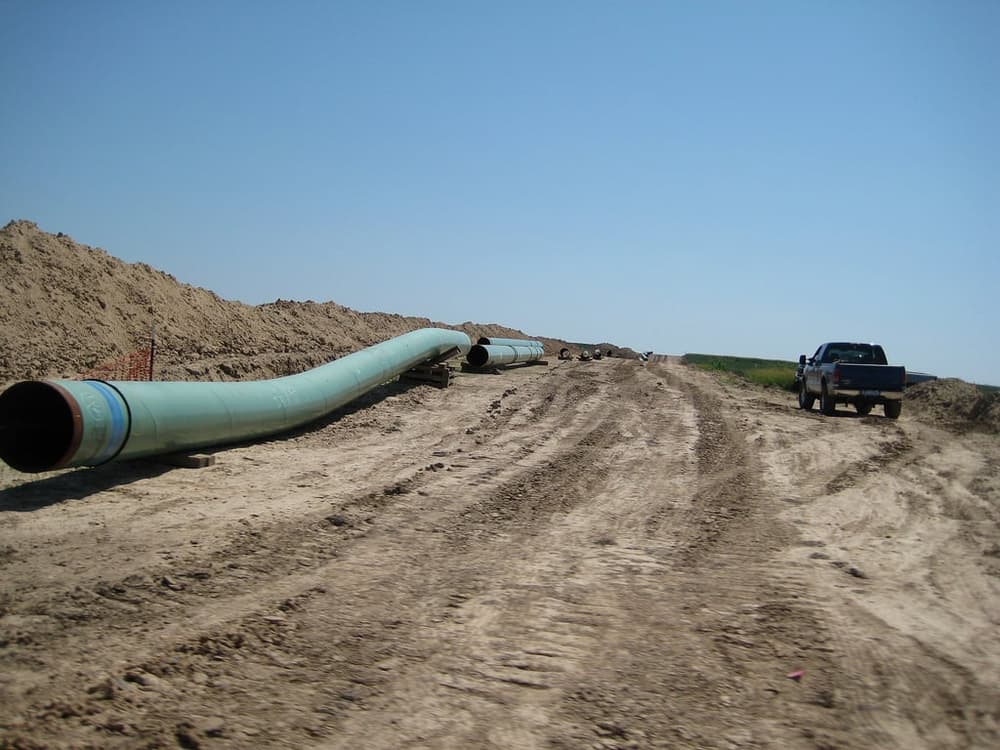The showdown underscores the increasingly well-organized and diverse resistance to pipelines in both USA and Canada and now stretches well beyond the environmental movement.
When President Trump handed TransCanada Pipeline Co. a permit for its Keystone XL pipeline last month, he said the company could now build the long-delayed and divisive project "with efficiency and with speed."
But Trump and the firm will have to get through about 90 Nebraska landowners in the path of the pipeline - the fate of which now rests with an obscure state regulatory board, the Nebraska Public Service Commission, Reuters reports.
As well as voicing concerns about pollution threats to local groundwater, the Nebraska opponents of the Keystone XL pipeline contend it will provide mainly temporary jobs that will vanish once construction ends, and limited tax revenues that will decline over time.
TransCanada has said on its website that the pipeline would create "tens of thousands" of jobs and tens of millions in tax dollars for the three states it would cross - Montana, South Dakota and Nebraska.
President Trump has been more specific, saying the project would create 28,000 US jobs. But a 2014 State Department study predicted just 3,900 construction jobs and 35 permanent jobs.
The study indicates those jobs would be temporary, including some 16,100 at firms with contracts for goods and services during construction, and another 26,000, depending on how workers from the original jobs spend their wages.
The latest Keystone XL showdown underscores the increasingly well-organized and diverse resistance to pipelines in both USA and Canada, and now stretches well beyond the environmental movement.
Last year, North Dakota's Standing Rock Sioux, a Native American tribe, galvanized national opposition to the Energy Transfer Partners Dakota Access Pipeline. Another ETP pipeline in Louisiana has drawn protests from flood protection advocates and commercial fishermen. Plans to open British Columbia’s environmentally sensitive coast to pipelines from the Alberta oilsands also face concerted opposition from indigenous, environmental and business groups.
The stakes for the energy industry are high as the Keystone XL combatants focus on Nebraska, and especially high for Canadian producers that have struggled for decades to move more of their landlocked oil reserves to market. Keystone offers a path to get heavy crude from the Canada oil sands to refiners on the US Gulf Coast equipped to handle it.
TransCanada has route approval in all of the US states the line will cross except Nebraska, where the company says it has been unable to negotiate easements with landowners on about nine percent of the 300-mile crossing.
So the dispute now falls to Nebraska's five-member utility commission, an elected board with independent authority over TransCanada’s proposed route.
The commission has scheduled a public hearing in May, along with a week of testimony by pipeline supporters and opponents in August. Members face a deadline set by state law to take a vote by November.
TransCanada has been trying since 2008 to build the 1,100-mile line from Hardisty, Alberta, to Steele City, Nebraska, where it would connect to a network feeding the Midwest and Gulf Coast refining regions. The firm had its federal permit application rejected in 2015 by the Obama administration.

